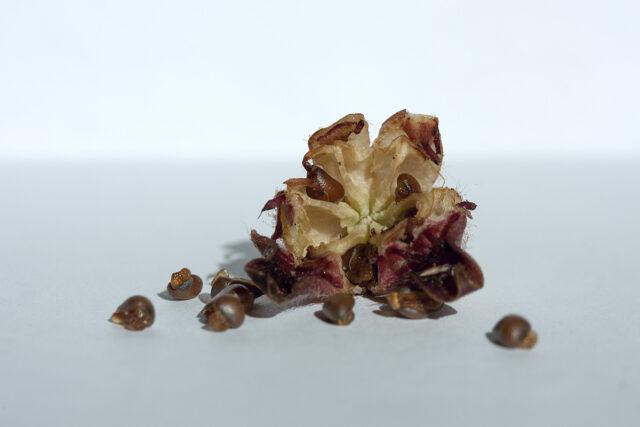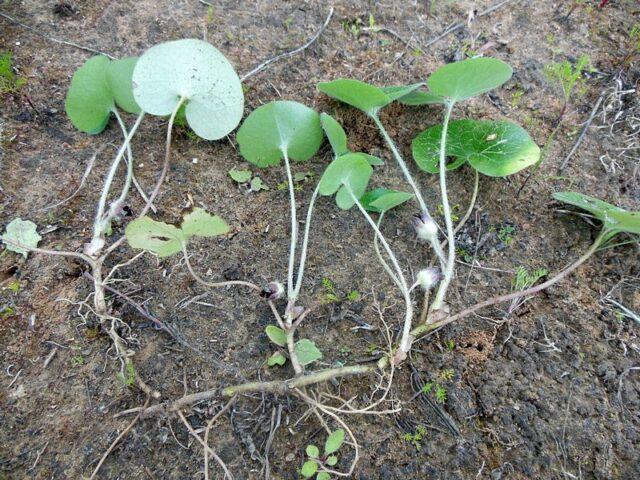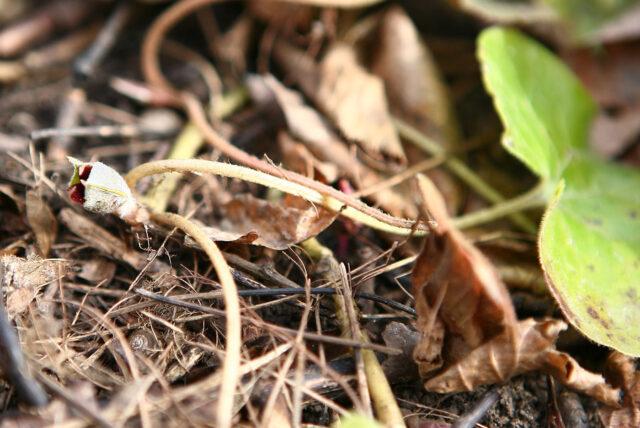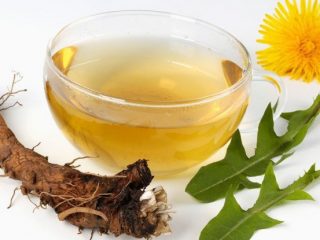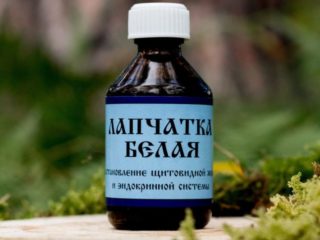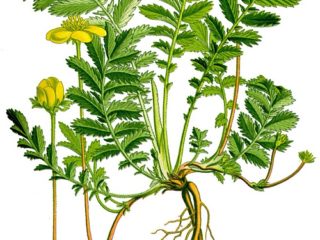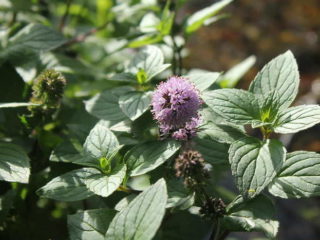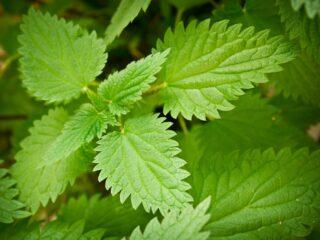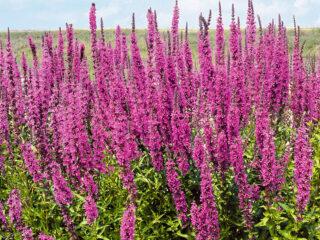Content
- 1 What does a hoof look like?
- 2 Varieties
- 3 Application in landscape design
- 4 Reproduction methods
- 5 Planting and caring for hoofs in open ground
- 6 Medicinal properties of European coffin
- 7 Use in folk medicine
- 8 Restrictions and contraindications
- 9 Collection and procurement of raw materials
- 10 Conclusion
- 11 Reviews of taking hoofed grass for alcoholism
The herb hoofed grass for alcoholism is a proven and effective folk remedy. The plant can be used to treat many ailments, but you should first study its features and rules of use.
What does a hoof look like?
Clefthoof, asarum, or hoofweed (Asarum) is an evergreen plant from the Kirkazon family with valuable decorative and medicinal properties. It has a creeping branched stem that rises no more than 15 cm above the ground, grows profusely and forms a dense green carpet on the soil surface.The photo and description of the European hoofed grass shows that its leaves are leathery, whole, heart-shaped or kidney-shaped, located at the tops of the shoots.
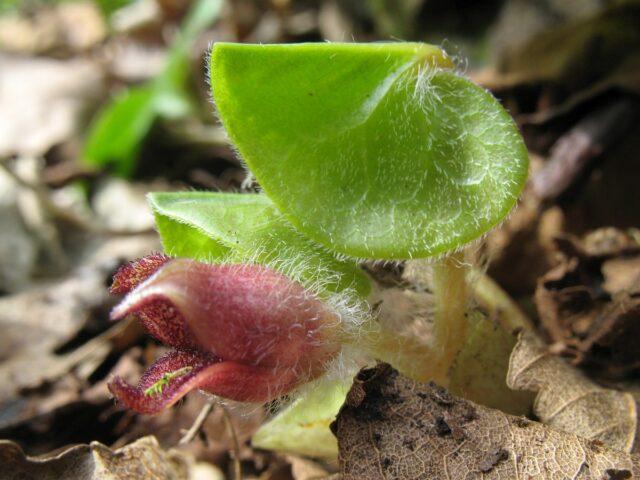
Clefthoof buds reach 10 mm in diameter
The plant enters its decorative period in April and May and bears single bell-shaped flowers, brown-green on the outside and brown on the inside. The fruits look like hexagonal boxes with numerous small seeds.
Where and how does it grow
Clefthoof is very widespread throughout the world. You can see it not only in its homeland, in Africa and Western Asia, but also in North America and Central Europe. The European ungulate grows on the territory of Russia; it is found in the middle zone and in the south of Siberia, as well as in Altai. The perennial prefers fertile soils rich in humus and shaded areas; it often chooses coniferous and mixed forests, the lower tier of aspen and birch forests for growth.
Clefthoof is a valuable plant. In many Russian regions it is listed in the Red Book, for example, in Altai, Karelia, Rostov and Kemerovo regions.
Varieties
The plant is represented by several popular varieties. All of them have useful properties and look attractive in summer cottages.
Intermediate
Intermediate hooffoot (Asarum intermedium) is a relict species of herbaceous plant. Reaches about 15 cm in height, blooms with purple-brown buds, green leaves live for 14 months and are stored for the winter. The plant pollinates on its own, but its seeds are distributed by ants.
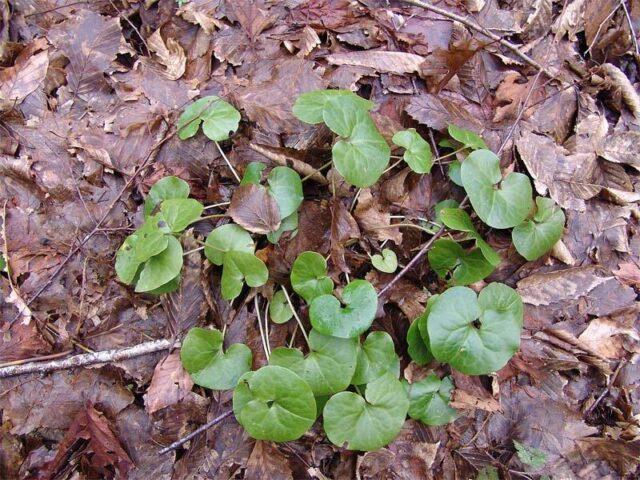
The intermediate ungulate is found mainly in the Western Caucasus and Transcaucasia
European
The most valuable from the point of view of medicinal properties, European hoofed grass (Asarum europaeum) grows in the central part of Russia and Western Siberia. It is a toxic plant, but is used as an anthelmintic and anti-inflammatory agent. European ungulate root extract is used in the treatment of scabies and skin lesions.
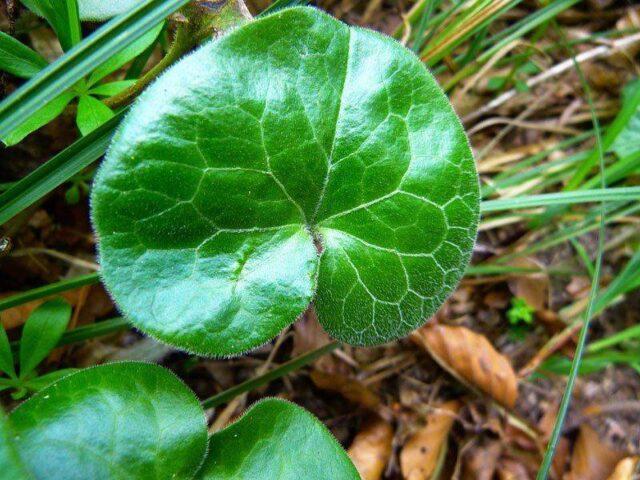
European ungulate has a distinct peppery odor.
Siebold's Hoof
Siebold's hoofweed (Asarum sieboldii) differs from other species in having a shortened root and a height of about 20 cm. It sheds its leaves in the winter and bears flowers in mid-spring; they are purple in color. Although this type of plant is not evergreen, it is very popular among gardeners.
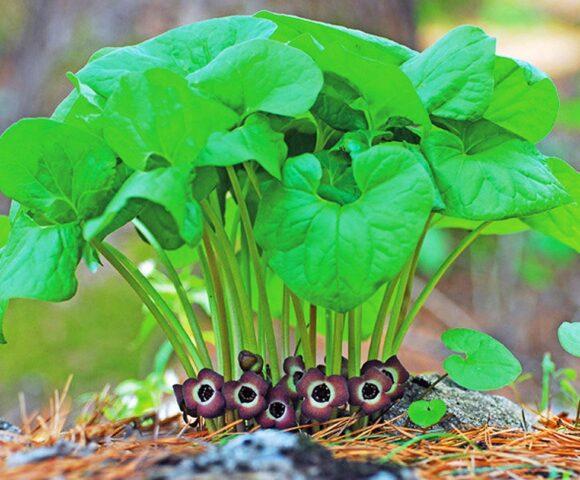
The diameter of Siebold's ungulate flowers reaches 1.5 cm
Caudate
Tailed hoof (Asarum caudatum) is an evergreen plant up to 25 cm tall. The leaves of the perennial are smooth and dense, with well-defined veins, up to 15 cm wide. The buds are brown-violet in color, with narrow petals and a light throat. The species blooms later than others, at the end of May and until mid-June.
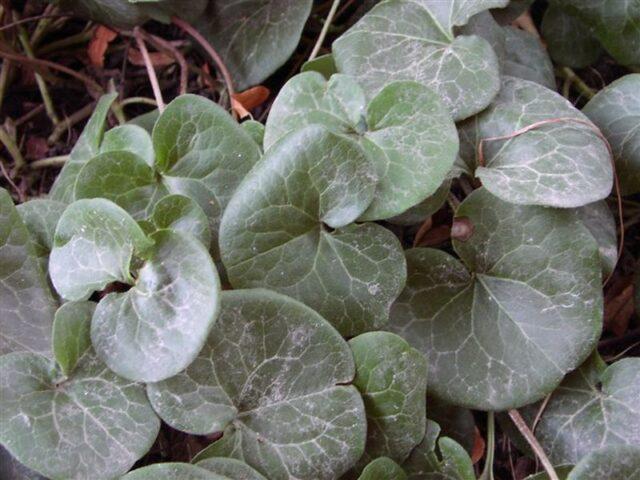
The tailed hoof can withstand frosts down to - 20 ° C
Application in landscape design
In garden plots, hoofweed is used mainly to form a beautiful soil cover. A low plant can act as a spectacular dark background for ferns and roses, and fits well with any shade-tolerant perennials.
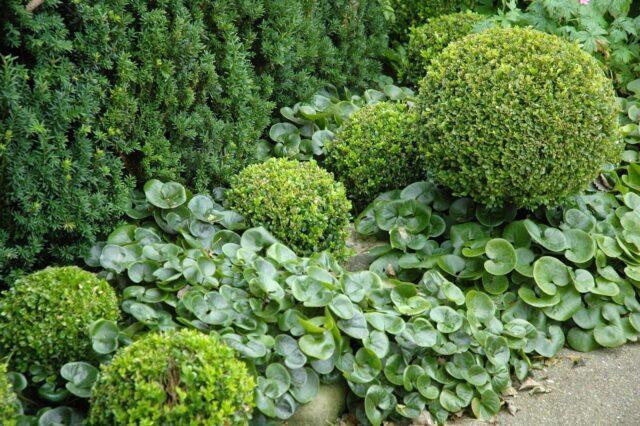
In landscape design, the hoof is used to form the lower tier
The crop is often planted in flower beds around spreading trees that block the bright sun.The plant remains decorative throughout the year; green leaves emerge directly from under the snow and most often retain their bright color when the autumn cold sets in.
Reproduction methods
Hoofweed is propagated by seeds and vegetative methods. The plant has good survival rate, and it is quite easy to spread it in the garden:
- Seeds. Chopweed is sown in the ground in the fall or in early spring in home seedlings; in the latter case, seedlings form only after a month. The plant develops slowly, the first true leaves form only the next season. Before sowing at home, the seeds should be kept in the refrigerator for several weeks for stratification to strengthen their hardiness.
Clefthoof seeds for propagation are collected in June
- By division. An adult plant is removed from the soil and the rhizome is cut into several parts. New bushes are immediately planted in the ground, without shaking off or washing the underground part.
Each of the divisions of the hoof must have strong roots and strong shoots
- By layering. Since the hoofed grass has creeping flexible stems, in the warm season they can be buried in the ground and wait for independent roots to appear. After this, the shoot is separated from the main plant and transferred to a new location.
When propagated by layering, the hoof plant produces roots on average within a month
Vegetative methods are used more often than seed propagation. They give results faster and also allow you to control the excessive growth of adult ungulates.
Planting and caring for hoofs in open ground
Clefthoof is a fairly hardy plant. Growing the crop usually does not cause problems, but you need to know the basic rules.
When and how to plant
It is recommended to plant the hoof plant in the ground from May to August. A place for the perennial is selected that is well shaded, with loose and moist soil and a neutral acidity level. The plant develops without problems on loams and sandstones with the addition of peat and humus. It also feels good in partial shade, but it is better not to plant it in bright sun.
Shortly before the plant takes root, the selected area is dug up and, if necessary, the soil composition is improved. For the hoof plant, prepare a small hole approximately twice the size of the roots, after which the seedling is buried in the soil and immediately watered abundantly.
Features of cultivation
The coffin has low care requirements. During hot months, you need to carefully monitor soil moisture and water the plant regularly. The perennial is fed only once a year at the beginning of summer; organic fertilizers should be used. From time to time it is recommended to weed from weeds that can take away moisture from the hoof.
The crop does not need pruning or shaping; it grows slowly and, moreover, does not form tall bushes. If the hoof grass has spread greatly throughout the area, it is enough to simply use the division method and transplant parts of the perennial to another place.
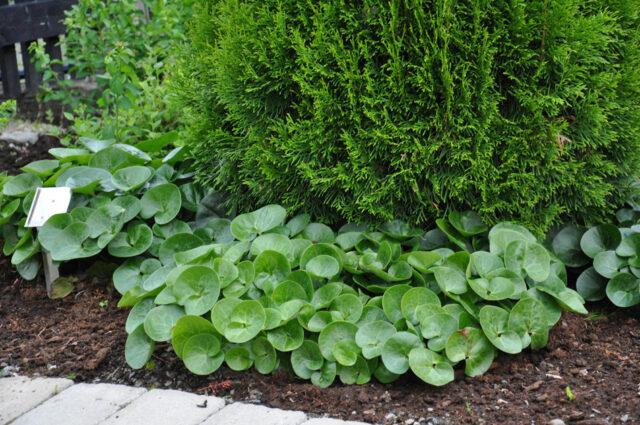
A flowerbed with hoofed grass can be mulched with dry peat or wood chips
Most representatives of the plant demonstrate good frost resistance and do not need winter shelter. Species sensitive to cold can be protected from snow and cold with fallen leaves or spruce branches.
Medicinal properties of European coffin
Ornamental ungulate is valued for its many medicinal properties. The plant is used:
- for heart and vascular diseases;
- for swelling;
- for migraines;
- with hepatitis;
- for poisoning and intestinal disorders;
- for colds and bronchitis;
- for impotence and gynecological diseases in women;
- for radiculitis and neuroses;
- for intestinal parasites;
- for eczema and scabies;
- for kidney diseases;
- for wounds, burns and insect bites.
Most of all, hoofed grass is known as an effective remedy against alcoholism. The plant not only creates an aversion to alcohol, but also equalizes the psychological state of a person struggling with addiction.
Use in folk medicine
The plant can be found in many home remedies. Traditional medicine uses it:
- to narrow blood vessels and raise blood pressure during hypotension;
- for expectoration when coughing;
- to combat inflammation and bacterial processes;
- to calm stress and neuroses;
- to relieve fever;
- to relieve pain and spasms.
Coffin has laxative properties and is used to relieve constipation. The plant can be used to improve bile production.
Recipes for decoctions and tinctures
Aqueous and alcoholic medicinal preparations can be prepared based on the medicinal plant coffin. Traditional medicine offers several proven options.
Decoction
A healthy decoction is prepared from the leaves and rhizomes of European ungulate. The recipe looks like this:
- dry plant raw materials are crushed in the volume of a large spoon;
- pour 250 ml of boiling water;
- simmer in a water bath for half an hour over low heat;
- When ready, filter and top up with clean liquid to the initial volume.
You need to drink a decoction of the plant in minimal dosages - half a small spoon up to three times a day. The product is beneficial for gastrointestinal disorders and diarrhea.
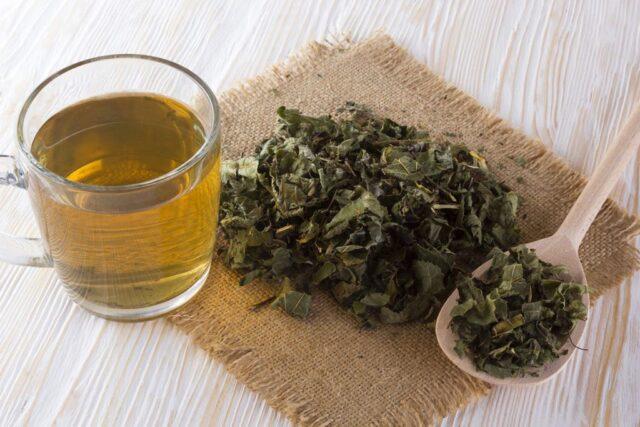
Coffin decoction can be used externally as a lotion for skin inflammation and eye irritation
Tea
Coffin tea is brewed according to the following algorithm:
- 2 large spoons of dry plant roots pour 500 ml of water;
- after boiling, boil for 30 minutes over low heat;
- cool the product and filter.
The prepared tea from the plant should be divided into four equal portions and taken on an empty stomach during the day for digestive disorders and inflammation.
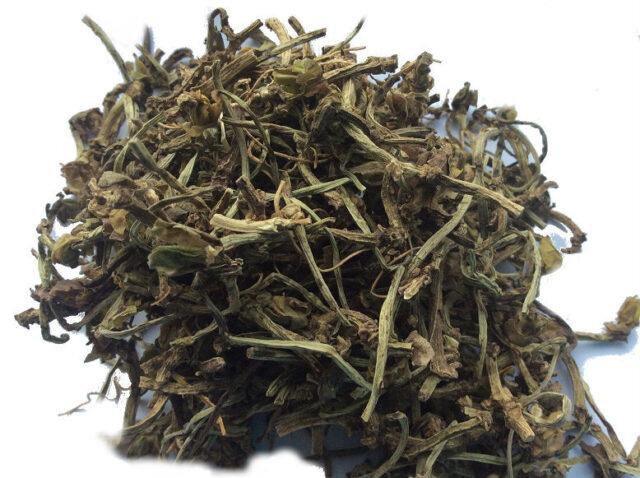
Tea with the coffin plant helps with kidney ailments
Coffee
An unusual recipe for coffin for alcoholism suggests making coffee using herbs. The drink is made from regular grains or instant powder. But to 50 ml of the finished product you need to add 1/4 of a small spoon of crushed plant root.
Coffee is taken to treat alcoholism; you need to drink it every other day just once a day.
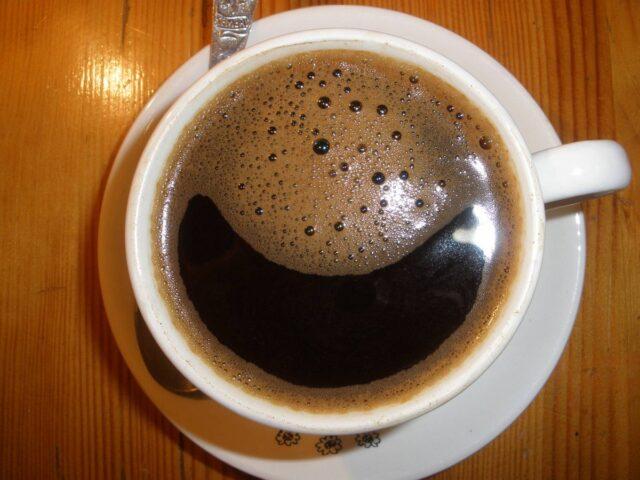
Coffee with the hoof plant creates an aversion to alcohol
European cleft tincture
A tincture with strong emetic properties is made from the root of the plant. The recipe looks like this:
- 100 g of dry root is crushed;
- pour 1 liter of vodka into the raw material;
- insist in a dark place for two weeks.
They take a plant-based remedy to treat alcohol addiction. The tincture is drunk with regular alcohol or clean water. Severe nausea occurs almost immediately, which ultimately develops an aversion to alcohol in the patient.
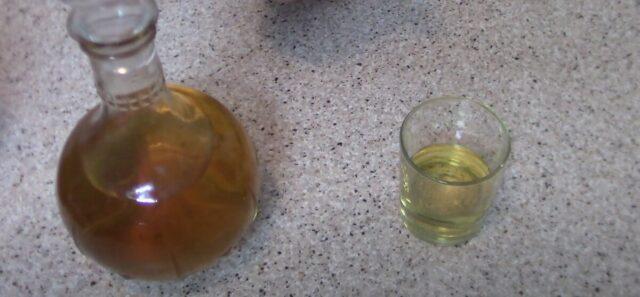
Clefthoof tincture is consumed in volumes of no more than 30 ml
Rules of application
Traditional medicine offers a variety of uses for the herb.Since the plant is classified as poisonous, when using any product you need to take tiny dosages.
How to take European hoofweed for alcoholism
There are many recipes with the herb hoofweed for alcoholism. One of the most popular looks like this:
- the dry root of the plant is ground into powder;
- mixed with green walnut peel in a ratio of 1:2;
- pour 15 g of the resulting mixture into 2 liters of wine;
- infuse the product in the dark for two weeks.
The finished medicine is filtered and given to the patient 30 ml per day.
Another recipe allows therapy to be carried out covertly, even if the alcoholic himself does not want to begin treatment. The diagram looks like this:
- crushed plant root in the amount of 15 g is poured into 250 ml of water;
- boil for five minutes over low heat;
- keep covered for an hour.
The cooled product is added in the amount of a large spoon to 200 ml of alcohol. Reviews of the root of the coffin for alcoholism claim that the medicine causes a quick and strong gag reflex. Therefore, usually after the fifth dose of the drug the patient decides to give up alcohol.
It makes sense to treat alcoholism with the help of a plant only in combination with strong drinks. Reviews of European hoofed grass note that drinking the herb with tea while simultaneously voluntarily giving up alcohol will not have an effect.
At high temperature
Clefthoof root helps reduce fever and eliminate fever during colds. You need to prepare the following:
- 10 g of dry plant roots are poured with a glass of water;
- boil over low heat for ten minutes;
- cool and filter.
For treatment, you need to add a small spoon of the product to a glass of warm milk, and also add 5 g of honey and butter. Take the drug 80 ml three times a day.
For intestinal diseases
For indigestion and diarrhea, the following decoction of common hoofed grass helps:
- pour 250 ml of milk into a large spoon of dry plant root;
- bring to a boil over low heat;
- boil for ten minutes;
- cool and pass through cheesecloth.
You need to drink a decoction of the plant, a small spoon twice a day until the condition improves.
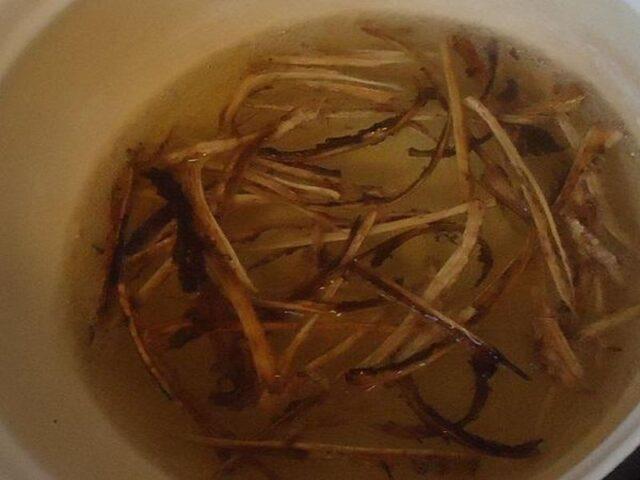
The roots of the coffin plant have astringent properties.
For headaches
You can use hoofed grass externally for severe migraines. The following infusion is usually used:
- the dry roots of the plant are properly crushed;
- measure out 1/4 small spoon of raw materials;
- pour a glass of boiling water;
- leave covered for an hour.
After the period of time in the warm solution has expired, you need to moisten the gauze and apply a compress to your forehead. Coffin will help relieve vascular and muscle spasms and eliminate headaches.
For scabies
The juice of the herb helps with scabies, itching and skin irritation. Fresh leaves of the plant are crushed and pressed through cheesecloth to obtain a clear liquid. Soak a cotton pad in the juice and wipe the affected area. The procedure is carried out over four days, and it needs to be repeated only once a day.
From ulcers and wounds
For wounds, ulcers and healing burns, homemade ointment based on coffin has a beneficial effect. They do it as follows:
- measure out 1/4 small spoon of dried plant root;
- mixed with 100 g of animal fat or petroleum jelly;
- bring to homogeneity and put in the refrigerator to harden.
Once a day, the product must be applied to the sore spot. You can also use ointment from the plant for joint ailments to relieve inflammation.
Restrictions and contraindications
The use of coffin herb can cause both benefit and harm. The plant contains a large number of valuable components, but it also contains toxic substances. It is necessary to avoid consuming perennials in any form:
- during pregnancy;
- during lactation;
- for hypertension and heart failure;
- for chronic kidney diseases;
- for stomach ulcers;
- for individual allergies;
- with internal bleeding;
- for acute pancreatitis and gastritis;
- during menstruation.
Children under 18 years of age and the elderly should not take teas, decoctions and tinctures. It is forbidden to use the hoof if there is severe physical exhaustion.
During treatment with the plant, it is very important to comply with the minimum dosages specified in the recipes. Exceeding the permitted volumes causes side effects such as nausea, diarrhea, migraines, uncontrolled vomiting and dehydration.
Collection and procurement of raw materials
You can collect coffin for medicinal purposes almost throughout the year. The leaves of the plant are harvested during the flowering period, in mid-May. Roots are dug even in winter, although it is best to do this in late autumn or early spring.
For treatment, raw materials are taken from healthy adult plants, the green parts are carefully trimmed with scissors.Harvesting is carried out on a dry and warm day. The raw materials must be immediately sorted out, thoroughly washed to remove dust and dirt, then cut into small pieces and placed on a baking sheet.
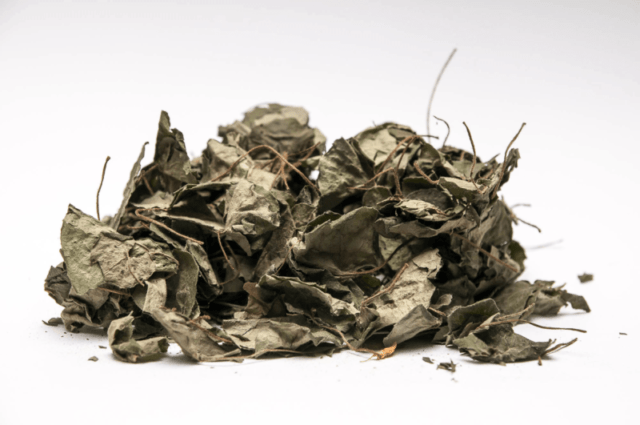
High-quality dried roots and leaves of the hoofed grass should crumble in your hands
It is best to dry the hoof in the fresh air in a shaded place or in a well-ventilated room. You can also put the plant in the oven, but heat it up to no more than 50 °C. Too intense heat treatment leads to the destruction of vitamins in the coffin.
The harvested grass and roots are distributed into paper bags or glass jars and placed in a dark and dry place. The raw materials of the plant can be stored for a year, but it should be stirred from time to time to prevent mold from appearing.
Conclusion
Clefthoof herb for alcoholism is a potent remedy that requires careful handling. If the recipes are followed exactly, the plant can develop an aversion to drinking alcohol. The perennial is also used for other diseases - mainly intestinal and skin.
Reviews of taking hoofed grass for alcoholism
